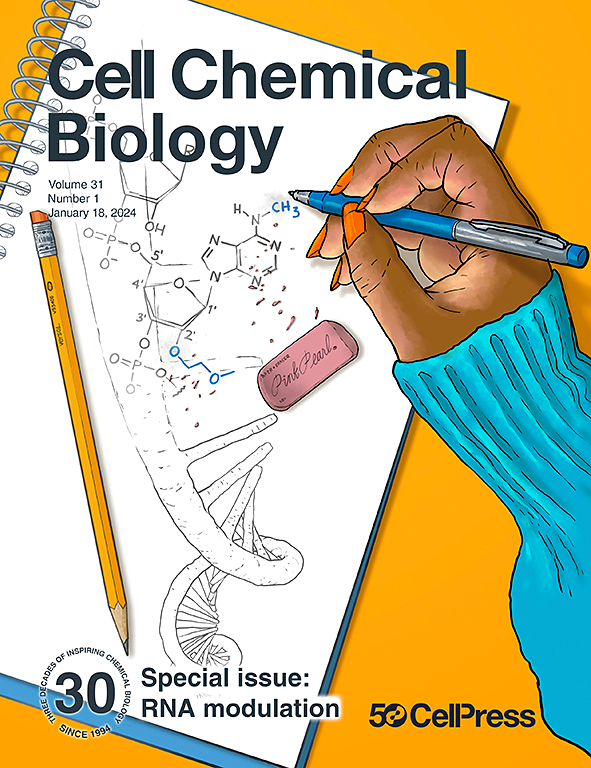Ribosomal RNA transcription regulates splicing through ribosomal protein RPL22
IF 7.2
1区 生物学
Q1 BIOCHEMISTRY & MOLECULAR BIOLOGY
引用次数: 0
Abstract
Ribosome biosynthesis is a cancer vulnerability targeted by inhibiting RNA polymerase I (Pol I) transcription. We developed specific Pol I inhibitors that activate a ribotoxic stress pathway to uncover drivers of sensitivity. Integrating multi-omics and drug response data from a large cancer cell panel, we found that RPL22 frameshift mutations confer Pol I inhibitor sensitivity. Mechanistically, RPL22 interacts directly with 28S rRNA and mRNA splice junctions, acting as a splicing regulator. RPL22 deficiency, intensified by 28S rRNA sequestration, promotes splicing of its paralog RPL22L1 and the p53 negative regulator MDM4. Both chemical and genetic inhibition of rRNA synthesis broadly remodel mRNA splicing controlling hundreds of targets. Notably, RPL22-dependent alternative splicing is reversed by Pol I inhibition, revealing a non-canonical ribotoxic stress-initiated tumor suppressive pathway. This study uncovers a robust mechanism linking rRNA synthesis activity to splicing, coordinated by the ribosomal protein RPL22.


核糖体RNA转录通过核糖体蛋白RPL22调控剪接
核糖体生物合成是一种通过抑制RNA聚合酶I (Pol I)转录而靶向的癌症易感物。我们开发了特异性的Pol I抑制剂,可以激活核糖毒性应激途径,以揭示敏感性的驱动因素。整合来自大型癌细胞组的多组学和药物反应数据,我们发现RPL22移码突变赋予Pol I抑制剂敏感性。在机制上,RPL22直接与28S rRNA和mRNA剪接连接相互作用,作为剪接调节剂。28S rRNA隔离加剧了RPL22缺陷,促进了其平行RPL22L1和p53负调节因子MDM4的剪接。化学和遗传抑制rRNA合成广泛重塑mRNA剪接控制数百个靶点。值得注意的是,rpl22依赖性的选择性剪接被Pol I抑制逆转,揭示了一个非典型的核毒性应激启动的肿瘤抑制途径。这项研究揭示了一个由核糖体蛋白RPL22协调的将rRNA合成活性与剪接联系起来的强大机制。
本文章由计算机程序翻译,如有差异,请以英文原文为准。
求助全文
约1分钟内获得全文
求助全文
来源期刊

Cell Chemical Biology
Biochemistry, Genetics and Molecular Biology-Molecular Medicine
CiteScore
14.70
自引率
2.30%
发文量
143
期刊介绍:
Cell Chemical Biology, a Cell Press journal established in 1994 as Chemistry & Biology, focuses on publishing crucial advances in chemical biology research with broad appeal to our diverse community, spanning basic scientists to clinicians. Pioneering investigations at the chemistry-biology interface, the journal fosters collaboration between these disciplines. We encourage submissions providing significant conceptual advancements of broad interest across chemical, biological, clinical, and related fields. Particularly sought are articles utilizing chemical tools to perturb, visualize, and measure biological systems, offering unique insights into molecular mechanisms, disease biology, and therapeutics.
 求助内容:
求助内容: 应助结果提醒方式:
应助结果提醒方式:


